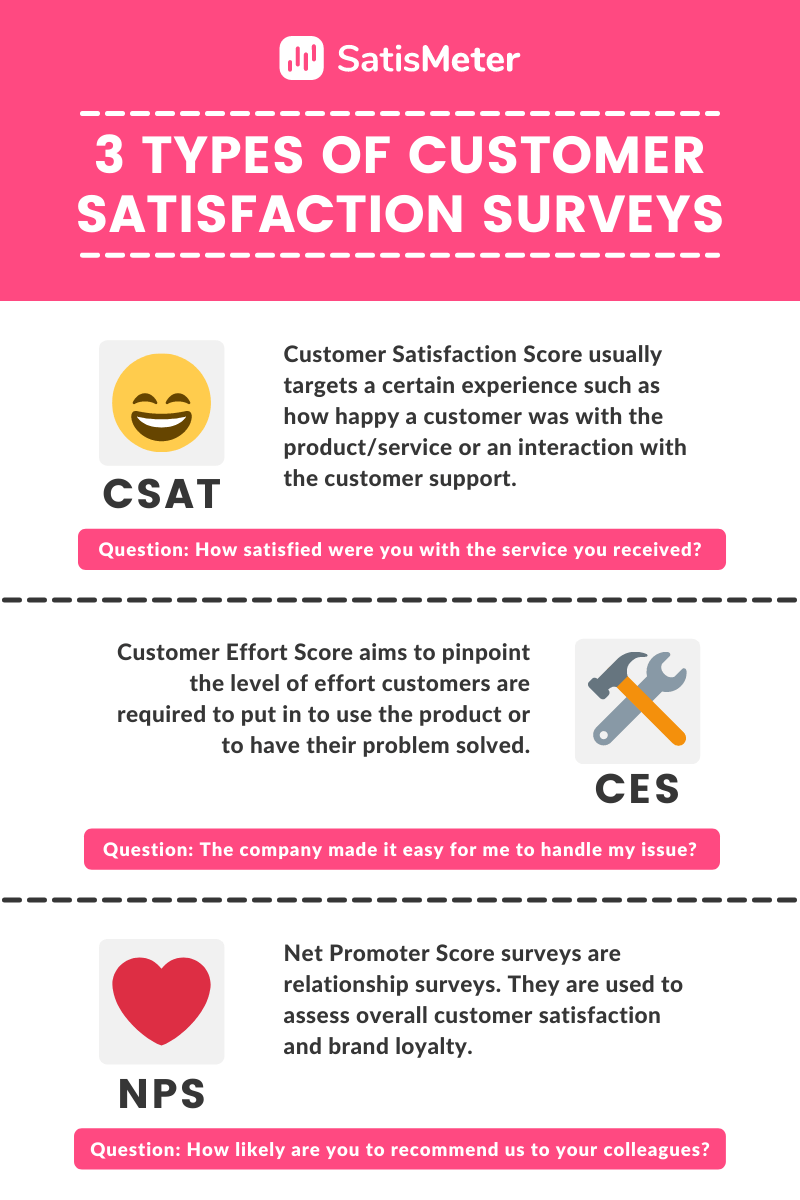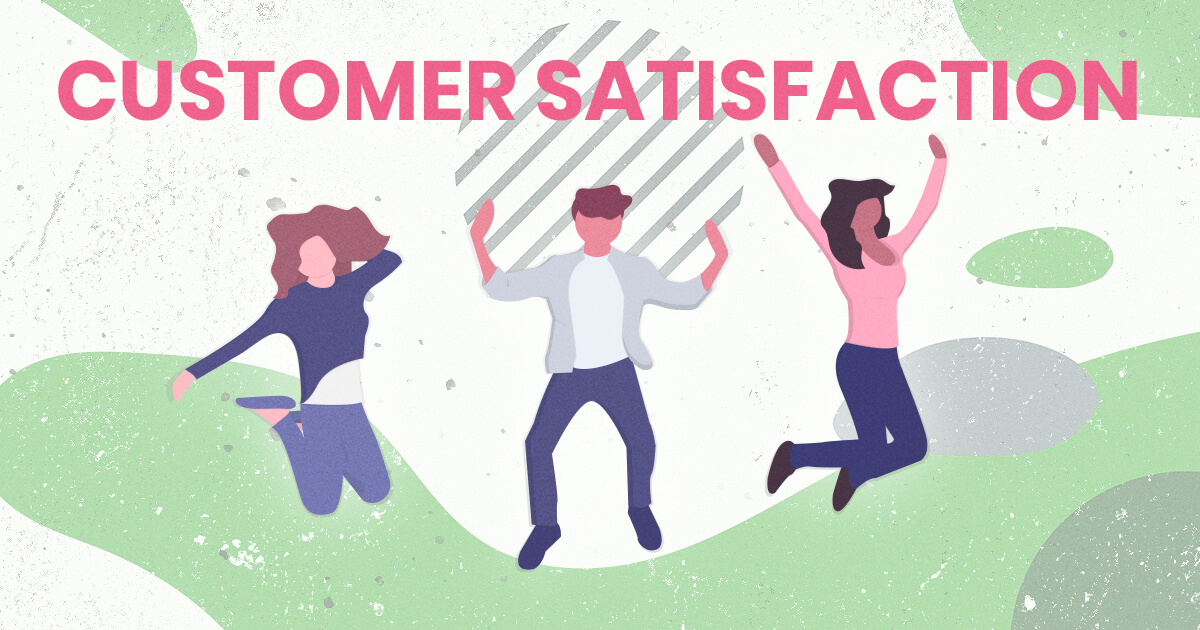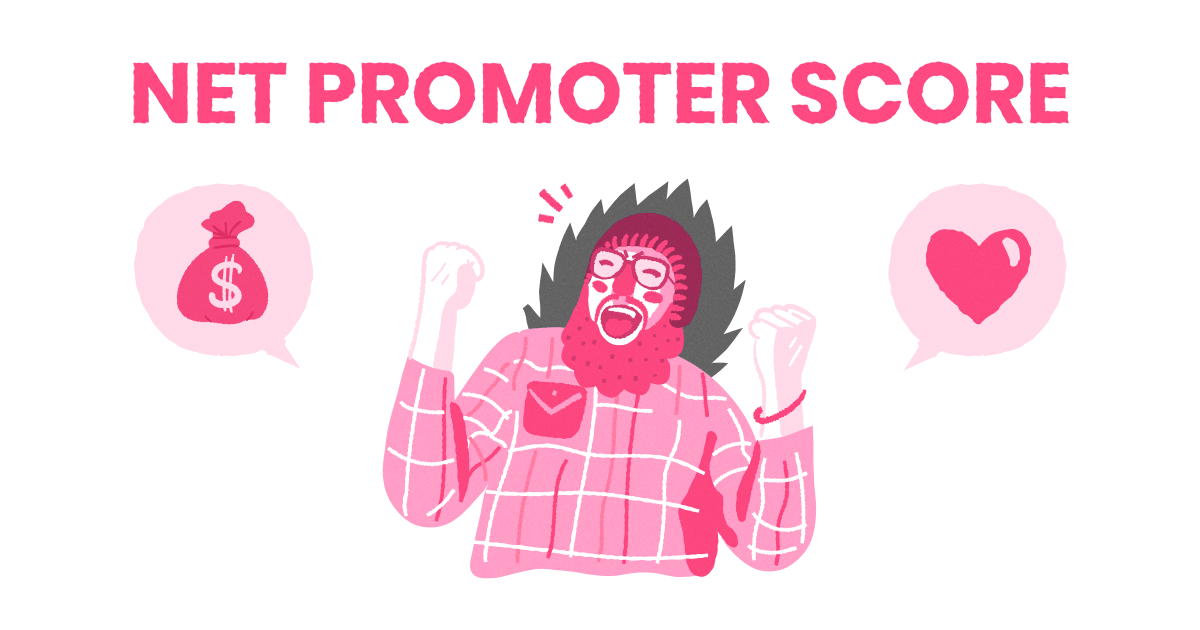2020 was a challenging year, full of difficulties but, on the other hand, full of opportunities. The whole world was forced into fastened digitalization, accelerating the transition rate by several years and putting the customer satisfaction survey placements at the top of the priority list.
This business movement from brick and mortar to digital brought a wave of new clients to online businesses and opened the competition. It takes no more than a minute for a customer to compare prices or find better products, just clicking on a button.
But there is still one differentiating area that can make or break your business – customer satisfaction.
Create your SatisMeter account now
It’s said that you can not improve what you can not measure. When it comes to improving customer satisfaction, it’s even more difficult – you may not even know that there is anything to be improved until it is already too late and you’ve already lost your unhappy customers.
This is why customer satisfaction surveys are nowadays more important than ever. They will help you assess the issues with your product, service, or website as a whole and meet more easily your customer’s expectations.
In this post, we will go through the overall explanation of what is actually customer satisfaction and give you some examples of how you can implement it in your business for long-term success.

What is a Customer Satisfaction Survey?
Customer satisfaction surveys are sets of questions addressed to customers by companies. They provide data and insight on customer satisfaction levels relating to products/services.
Companies use customer satisfaction surveys to understand better how happy customers are with a certain product or service. But there is more. Customer satisfaction surveys also provide data relating to lead conversion, engagement, loyalty, retention, and marketing attribution.
Customer satisfaction surveys reveal lots of valuable information. Their most important benefits are:
- Offering data on product/service customer satisfaction
- Revealing any company/product/service weak points
- Providing data on company/customer relations satisfaction
- Revealing customer engagement levels to improve retention
- Identify your most loyal customers and what makes them dedicated to your brand
- Providing information to improve customer targeting
- Providing data on inactive leads
- Offering insight into improving conversion rates

Why are Customer Surveys Important?
There are a lot of things to say about the importance of customer satisfaction surveys. Customer surveys are a very efficient way to obtain customer satisfaction metrics that provide insight into:
- how customers perceive your brand/company
- customer engagement levels
- how you can gain and retain more customers
- customer loyalty levels and how you can improve them
- how you can increase conversion and repurchase rates
Types of customer satisfaction surveys (CSAT, CES, NPS)
To better understand what you can do to make your customers happy and keep them coming back for more, you can choose from several main types of customer satisfaction surveys. You also have the option of creating a custom survey or an event-triggered survey.
Customer Satisfaction Score (CSAT)
CSATs are a type of customer satisfaction survey that require simple answers from customers and provide quantitative metrics of customer experience.
They usually target a certain experience, such as how happy a customer was with the product/service or his interaction with the customer support. Answers are usually yes/no, star ratings, numerical scores, or smiley/sad faces.
You should ideally send CSAT surveys immediately after a transaction/interaction with the customer. For instance, if you want to know how happy the customer was with the purchasing process right after a sale. Or right after contact with customer service to see how the customer feels about his experience.
You can also send CSAT surveys later if you are enquiring how happy the customer is with the product/service. First, give them some time to evaluate their experience.
To calculate your CSAT score, determine the percentage of customers that are happy and very happy with their purchase or the interaction.
CSAT is a popular form of customer satisfaction survey because it allows you to test satisfaction levels for both interactions and transactions. It has a simple format and is versatile when it comes to formulating questions.
CSATs can be used throughout the entire customer life cycle and allow companies to pinpoint any issues affecting customer satisfaction levels easily.

Customer Effort Score (CES)
CES stands for Customer Effort Score. It is a customer survey that aims to pinpoint the level of effort customers are required to put in to use the product/service or to have their problem solved by customer support.
CES surveys use very focused questions to measure customer satisfaction on particular issues. They are typically used after a customer support interaction or a purchase.
For instance, you can use a CES survey after closing a customer support ticket. One example of a CES survey question is “How difficult was it to find a solution to your problem?”. Customers could then choose an answer scaled from 1 to 5 or ranging from very difficult to very easy.
A major pro of CES surveys is that they are so easy to answer. Therefore, they have high response rates.
However, because the CES survey questions are limited, so are the insights you will gain from customers. Apart from a satisfaction score, CES surveys do not offer much more details. Therefore, they may reveal that your customer support processes need improvement but won’t reveal what exactly you can do to improve them.

Net Promoter Score (NPS)
NPS surveys are relationship surveys. They are used to assess overall customer satisfaction and brand loyalty. Answers from customers to NPS surveys are based on their overall interaction with your brand.
Therefore, you should only use NPS surveys after your customers have had a chance to experience your product/service. Or regularly with existing customers.
Net Promoter Score surveys help you find out how likely customers are to recommend your company/product/service to someone else, and in other terms, how successful your word of mouth marketing could be. Typically, NPS surveys have a rating between 1 and 10.
- Customers answering the survey with scores from 0 to 6 are considered detractors. Namely, unlikely to recommend you.
- Customers answering the survey with scores from 7 to 8 are considered passives.
- Customers answering the survey with scores from 9 to 10 are considered promoters. Namely, very likely to recommend you.
An NPS survey question is usually straightforward, such as ”How likely are you to recommend [company/product/service] to a [friend or family member]?”.
Regular NPS surveys can help track customer satisfaction over time and tailor campaigns to maintain high satisfaction and loyalty levels. However, they are general surveys. Therefore, they do not help pinpoint specific areas that need improvement, only overall satisfaction.

Types of Customer Satisfaction Survey Questions
How you ask questions in a customer satisfaction survey is also important. Each type of question has its own pros and cons. What type of questions can I use in my customer satisfaction survey? Below are the answers.
Multiple-choice questions
Many prefer multiple-choice questions for their customer satisfaction surveys because they have a high response rate. It is well-known that customers are more likely to answer surveys if they are quick and easy.
However, multiple-choice questions need to be carefully thought out to deliver good results.
On the other hand, open-ended questions have a lower response rate because they require more effort from the customer and may take longer to complete. The main advantage of open-ended questions is that they provide more insight and information.
Multiple-choice questions include the following types of questions:
- ordinal
- binary scale
- nominal
- Likert scale
- semantic differential.
Ordinal Questions (Rating Scale Questions)
Ordinal survey questions give customers multiple choices for their answers based on a scale ranging from 1 to 5 or 1 to 10.
Binary Scale Questions
Binary scale questions give customers two possible answers they can choose from. Such as yes/no or smiley face/sad face.
Nominal Questions
Nominal questions let the customer choose the answer they identify with, and best describes their experience. For example, the question could be ”I am______,” and the answers could be ”Very satisfied”, ”Satisfied”, ”Not satisfied”.
Likert Scale Questions
Likert scale questions also use a rating scale. However, they also focus on a specific range of answers. Answer options typically range from 1 to 5. Customers can use the 1 to 5 rating and the relevant text to express their opinion on a product/service/experience.
Semantic Differential Questions
Just like Likert scale questions, semantic differential questions use a scale from 1 to 5. The difference is that semantic differential scale questions better describe an opinion or type of experience customers can identify with.
Open-ended questions
Open-ended questions require more effort from the customer but provide more information.
Surveys with open-ended questions allow customers to write down their answers in their own words instead of choosing a pre-set answer.
Open-ended questions offer more insight into what customers are thinking. They are a great way to identify areas that need improvement or development. However, data obtained from open-ended questions is also harder to obtain and process.
In practice, open-ended questions are put as a kind of a feedback “bonus” at the end of the survey. Customers do not like to write open-ended feedback (and it is hard to compare), so first, you would ask all the multiple-choice questions, leaving the open-ended question as the last one.
Best Customer Satisfaction Survey Question Examples
General Feedback Survey Questions
General feedback questions can help you assess a customer’s overall experience. It can be their experience with your product or service, with your support staff, or with the purchasing process.
Examples:
- How would you rate your experience with [company]?
- How would you rate your experience with [product/service]?
- How likely are you to buy [product/service] again?
- How likely are you to buy from [company] again?
- Were you able to find what you were looking for?
- Did [company] meet your expectations?
When to send: regularly, depending on your industry and customer lifecycle.
Purchase Feedback Survey Questions
Purchase feedback questions can help you assess how satisfied a customer is with the check-out process.
Examples:
- How easy was it to find what you were looking for?
- How easy was it to complete your purchase?
- Was it easy to purchase your item or service?
- How would you rate the check-out process?
- How satisfied are you with your purchase?
- How would you rate your shopping experience?
When to send: following a purchase or delivery.
Product Feedback Survey Questions
Asking product feedback questions in your surveys can provide valuable information, essentially for your business’s continuous development. Don’t forget that no matter how good your product is, it can always get better.
Examples:
- What would you change about [product/service]?
- What is your favorite [product/service] feature?
- Which [product/service] features could you do without?
- What new features would you like to see?
- What do you think about the quality/price ratio of [product/service]?
- Which word would you use to describe [product/service]?
- How well does our product/service meet your needs?
Website Customer Effort Survey Questions
Your website is an important part of your business. Customer satisfaction surveys can provide many valuable answers on what you can improve or streamline to guarantee more customers.
You can also use these surveys if you’ve recently implemented some design or functionality changes.
Examples:
- How easy was it for you to navigate our website?
- Did you easily find what you were looking for?
- Was the website responsive?
- Is there anything you would change about our website?
- How easy was it to find the information you were looking for?
- Is there anything you hoped to find on our website and did not?
Customer Support Survey Questions
Customer support is essential to any business. It’s how you can increase conversion rates, improve customer loyalty, and grow your business.
Once a customer has completed a customer support interaction, you should have a survey to assess their satisfaction with the process.
Examples:
- How would you rate your customer support experience?
- Were we able to solve your problem or answer your questions?
- Would you contact customer support again?
- How much effort did you personally have to put forth to solve your issue?
- How fast did you receive an answer to your questions about our products?
- Would you agree with this statement: [company] easily solved my issue.
When to send: immediately after providing closing a support ticket.
Marketing Survey Questions
To better know your customers, put your surveys to work. Ask targeted questions that let you know important details.
Examples:
- How did you find us?
- What attracted you to our product/service?
- What made you try us?
- Did you use our competitors’ services before?
- How often do you use our product/service?
- Are you following our brand on social media?
Competition Survey Questions
You always want to know how you compare to your competition. Customer satisfaction surveys can give you great insight into this aspect.
Examples:
- How would you rate us compared to our competition?
- What made you choose us over our competitors?
- What similar companies have you purchased from before?
- What product/service were you using before using ours?
- What features of the previous product do you miss?
- Why did you switch from the previous product to our product?
When to send: sometime after purchase. Ideally, when the customer has had time to get acquainted with the product/service.
Promoter Survey Questions
How likely a customer is to recommend you speaks volumes. This NPS survey type is ideal for measuring overall perception and satisfaction levels.
Examples:
How likely are you to recommend our company to a friend or colleague?
What would you say to someone who asked what you think of us?
When to send: in a targeted website survey, by email, or in your exit/return intent survey

From time to time you can also launch exceptional surveys when the situation needs it. For example, if you’re worried about losing customers during the coronavirus outbreak, you can use our free COVID-19 template survey, in order to get a customer health report and help you reduce churn.
Conclusion
It said that customer satisfaction is one of the main competitive advantages that you can directly influence – with a huge impact on your business’s bottom line.
But you can not fix the “unknown unknowns”, can you?
This is exactly where customer satisfaction surveys come in: They help your business to efficiently identify the bottlenecks or prevent you from mistakes that will be difficult to correct – after the wave of negative reviews came.
So no matter if it is just basic customer feedback after order completion or a more complex NPS scoring that would be done throughout the whole site – start listening to your customers today, and get ahead of the competition.
Sign up now!

